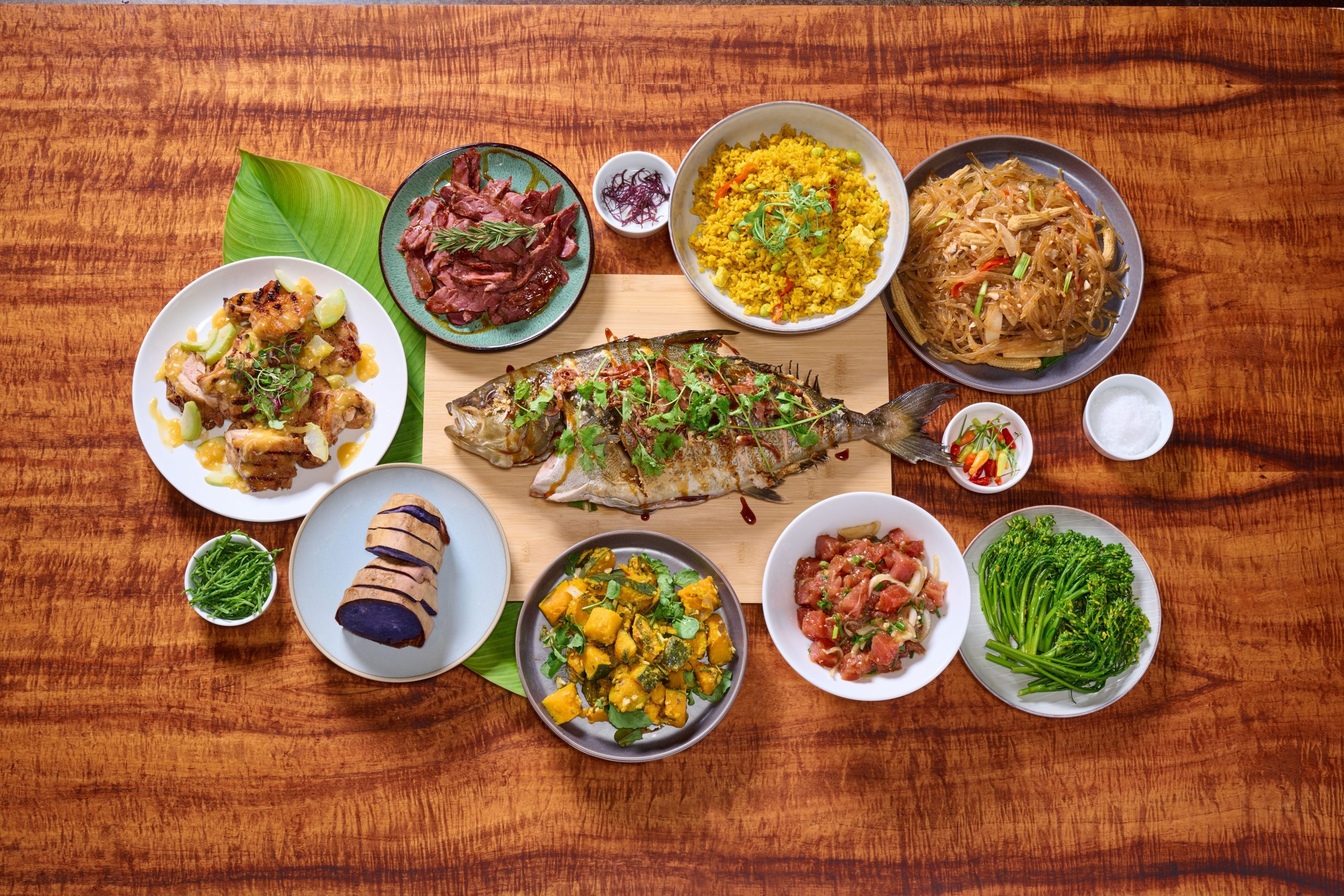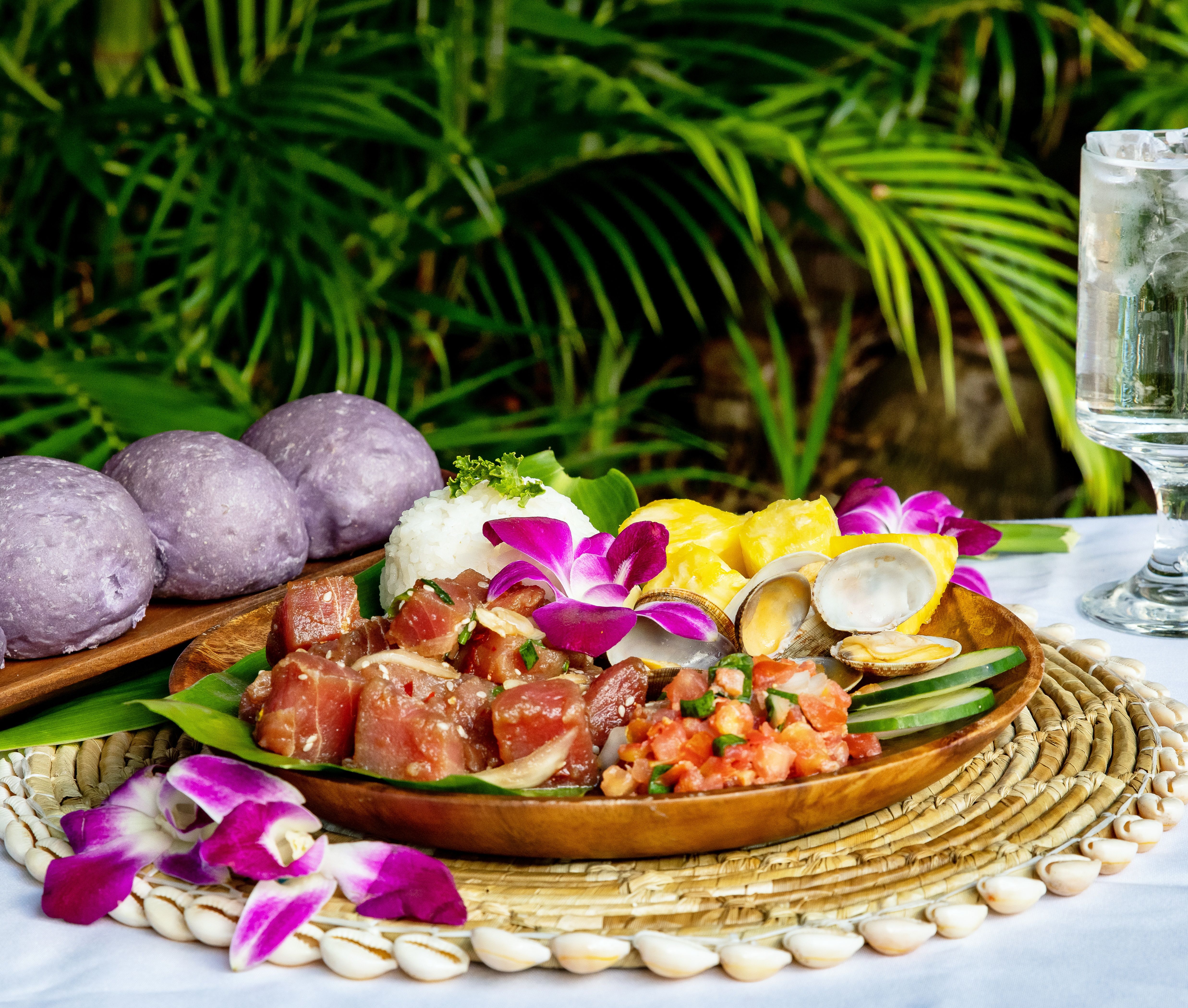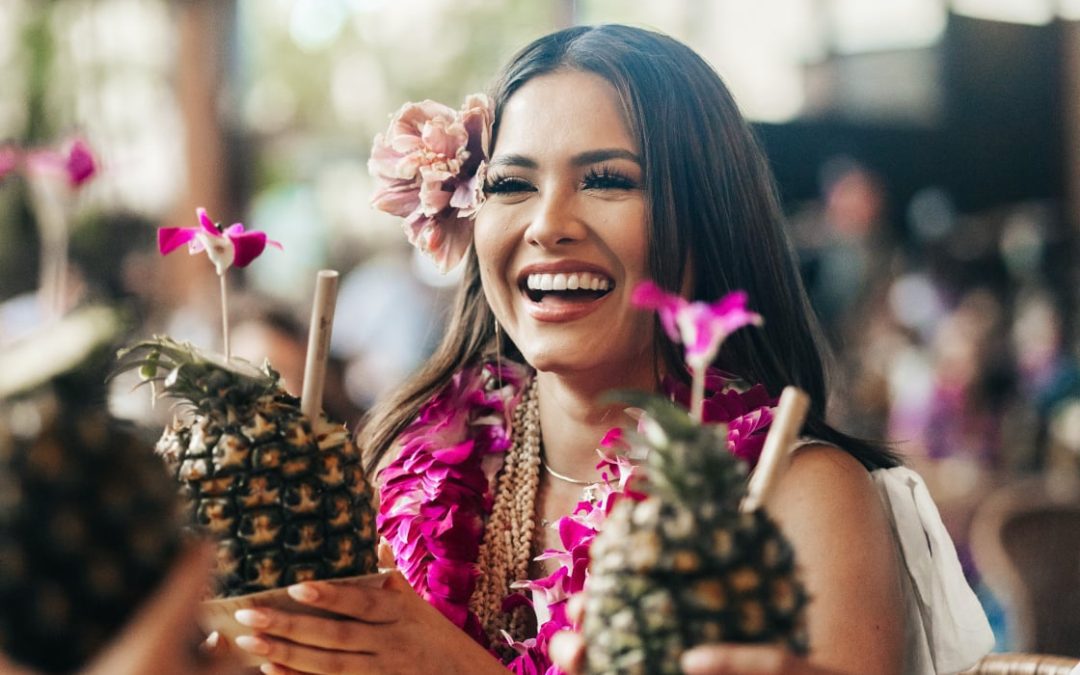When you attend a Hawaiian lūʻau, you do more than enjoy a meal, you immerse yourself in a celebration of history, tradition, and aloha. Every dish, performance, and interaction reflect the cultural richness of the Hawaiian Islands. As you savor each bite, you participate in longstanding customs and feel the genuine warmth of Hawaiian hospitality, deeply rooted in the concept of ʻohana (family.)
Lūʻaus often feature traditional Hawaiian music and hula performances that paint a vivid picture of the islands’ history and values. These elements turn the gathering into an immersive experience. Rather than just eating, you engage in a journey that brings Hawaiʻi’s vibrant legacy to life.

Lūʻau food presentation at the Aliʻi Lūʻau. Photo by Polynesian Cultural Center.
What Foods Can You Expect at a Hawaiian Lūʻau?
A traditional Hawaiian lūʻau goes beyond just satisfying hunger—it bridges the past and present through food. When you attend, you celebrate culture and community while enjoying dishes that reflect the land and the people.
Each bite tells a story. The flavors, ingredients, and preparation methods highlight a unique blend of indigenous roots and multicultural influences, offering a true taste of island heritage.
Kalua Pig: The Heart of the Feast
Kalua pig takes center stage at most lūʻaus. Hawaiians have prepared this dish for generations using a method that brings families and communities together.
The process starts by seasoning a whole pig with sea salt, then wrapping it in banana leaves to lock in moisture and add subtle sweetness. The pig is then cooked in an imu—an underground oven lined with hot rocks.
Over several hours, the meat cooks slowly, absorbing smoky flavor and becoming incredibly tender. Preparing kalua pig involves communal effort and reflects the value of ʻohana, making it more than just a dish—it’s a symbol of unity and tradition.

Two performers on stage holding the imu pig. Photo by Polynesian Cultural Center.
Lūʻau Staples: Celebrating Cultural Diversity
A Hawaiian lūʻau brings together flavors from a wide range of cultures, reflecting the islands’ rich and diverse heritage. Each dish carries a unique origin and story, highlighting the fusion of Native Hawaiian, Asian, Portuguese, and Western influences. Here are some of the staple dishes you’ll often find at a traditional lūʻau.

Just a few of the dishes available at the Polynesian Cultural Center’s lūau buffet menu. Photo by Polynesian Cultural Center.
Poi: A Taste of the Land
Made from pounded taro root, poi is not only visually distinct with its purple hue, but also rich in nutrients. It connects deeply to Hawaiian agriculture and traditions, symbolizing sustenance and respect for the land.
Lomi Lomi Salmon: A Refreshing Classic
This chilled dish combines salted salmon with diced tomatoes and onions. Introduced by early Western settlers, lomi lomi salmon adds a bright, flavorful component that honors Hawaiʻi’s cultural fusion.
Chicken Long Rice: Comfort in a Bowl
A beloved staple, chicken long rice features shredded chicken and vermicelli noodles in a light broth. This dish, influenced by Asian cuisine, adds warmth and texture to the meal.
Haupia: The Perfect Ending
Made from coconut milk and thickened into a pudding, haupia delivers a cool, creamy finish. It reflects Hawaiʻi’s tropical flavors and offers a delightful contrast to the rest of the feast.
A Feast That Tells a Story
Each dish at a lūʻau carries its own history. From the smoky kalua pig to the creamy haupia, every element celebrates Hawaiʻi’s multicultural roots and island traditions. A Hawaiian lūʻau isn’t just about enjoying food—it’s about embracing a way of life, connecting with others, and honoring a legacy that continues to thrive.
 Antoniette Caryl Yee-Liwanag is a multilingual Filipina with a passion for culture, travel, and food. Fluent in Tagalog, Kapampangan, English, and Spanish, she brings a rich cross-cultural lens to her work at the Polynesian Cultural Center. Through her blog, she shares meaningful moments that highlight global traditions and local flavors.
Antoniette Caryl Yee-Liwanag is a multilingual Filipina with a passion for culture, travel, and food. Fluent in Tagalog, Kapampangan, English, and Spanish, she brings a rich cross-cultural lens to her work at the Polynesian Cultural Center. Through her blog, she shares meaningful moments that highlight global traditions and local flavors.


Recent Comments